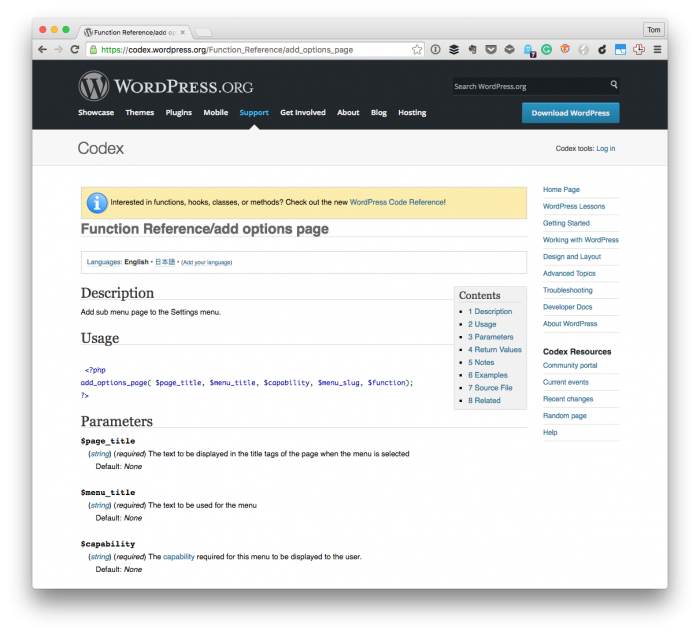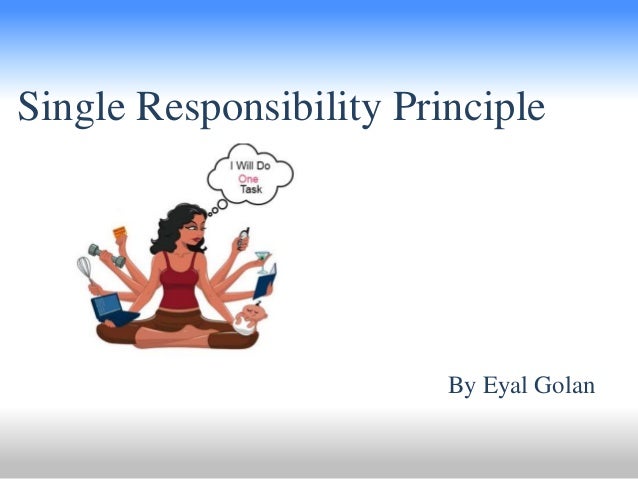
- Single responsibility principle. how to#
- Single responsibility principle. software#
- Single responsibility principle. free#
Single responsibility principle. free#
We can follow the same principle for the Monitor class.Įxcellent! We've decoupled the dependencies and are free to test our Windows98Machine with whichever testing framework we choose. If we want, we can easily switch out the type of keyboard in our machine with a different implementation of the interface. Now our classes are decoupled and communicate through the Keyboard abstraction. Let's decouple our machine from the StandardKeyboard by adding a more general Keyboard interface and using this in our class: public interface Keyboard Single Responsibility Principle Each responsibility should be a separate class, because each responsibility is an axis of change. And we're stuck with our Monitor class too. Not only does this make our Windows98Computer hard to test, but we've also lost the ability to switch out our StandardKeyboard class with a different one should the need arise. An example of this responsibility is a method that orchestrates calls to components that each have other responsibilities:Ĭlass BufferedLogger implements Logger ", t ) ĪlertingService. Control FlowĪ piece of an application’s control flow, execution, or data flow. A specific kind of data is configuration: a collection of parameters for some other method, class, or system. Embodying a piece of data can only be a responsibility of a class (object), but not of a method, module, or service. DataĪ profile of a person on a website, a JSON document, a message.
Single responsibility principle. how to#
On the level of classes, modules, and services, an external integration responsibility is knowing how to integrate (or encapsulating integration with) the external part: for example, a class knowing how to read the system time (which is exactly what is), or a service encapsulating talking with an external API. Finally, there are integrations with external systems, such as database transactions, reading from or writing to a distributed message queue such as Kafka, or RPC calls to other services. Then, there are integrations with the system, such as logging or checking the system time ( System.currentTimeMillis()). On the lowest level, this can be an integration between modules within the application, such as putting a message into a queue which is processed by another subsystem. On the level of classes and above, a business logic responsibility is knowing how to do (or encapsulating) the business function: for example, a class knowing how to convert XML documents into JSON, or a service encapsulating the detection of fraud transactions. Here are some examples (they are derived from Adam Warski’s classification of objects in applications which he distilled in his thought-provoking post about dependency injection in Scala): Business Logicįor example, extracting a phone number from text, converting an XML document into JSON, or classifying a money transaction as fraud.

This principle aims to solve the growing complexity of.


This principle was introduced by Robert C. One reason for the change is a change in one set of requirements. Instead of defining a responsibility in abstract terms, it may be more intuitive to list the actual types of responsibilities. The single responsibility principle is a design principle which states that every class or module should have one responsibility and one reason to change.

This phrase is a little more concrete, but it still doesn’t explain what a responsibility is and how small or large a responsibility should be for each particular method, class, module, or service. So, the SRP states that each component should have a single responsibility.
Single responsibility principle. software#
The Single Responsibility Principle applies to the software that we develop on different levels: methods, classes, modules, and services (collectively, I’ll call all these things components later in this article). Let’s try to deconstruct it and look at what it actually means. The Single Responsibility Principle may feel a bit vague at first. This article explains the Single Responsibility Principle (SRP): what does it practically mean? And when and how should we apply it? What Does the Single Responsibility Principle Say?


 0 kommentar(er)
0 kommentar(er)
